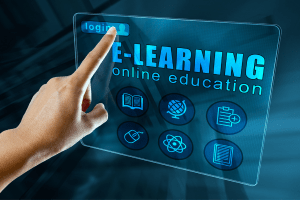
Developing An E-learning (CSD01EO)
Instructor
Savvy
Reviews
Course Overview
What Will Students Learn?
- Outline the common elements of three common instructional design models and summarize the common elements of eLearning development.
- Create organizational improvement goals.
- Propose types of training to address, based on signs that may suggest a need for training.
- Recognize commonly used verbs, and action verbs that belong to each of the domains in Bloom’s Taxonomy.
- Write measurable learning objectives and determine assessment types for each domain of Bloom’s Taxonomy for the Digital Age.
- Create a rubric for an eLearning assignment.
- List various activities that could be used to support Universal Design for Learning and list various activities and attitudes that could be used to support LGBTQ2+ learners.
- Summarize in plain language the essential message of Accessibility Standards.
- Recap the four levels of eLearning and map how each eLearning level corresponds to Bloom’s Taxonomy.
- Suggest media standards for personal eLearning development and talk about ways to address the basic tenets of teaching adults.
- Establish great activities and create a storyboard for eLearning.
- Make recommendations on choosing an eLearning authoring tool and learning management system (LMS).
- Evaluate using each level of Kirkpatrick’s Levels of Evaluation.
- Determine return on expectation for impact evaluation.
What Topics are Covered?
- Instructional design models
- Analysis phase – needs assessment
- Design phase – learning objectives
- Design phase – assessment
- Design phase – reducing barriers
- Design phase – accessibility
- Design phase – design strategy
- Development phase – learning experiences and instruction
- Development phase – eLearning tools
- Evaluation
Course Content
-
Academy Topics
-
-
Learning Objectives
-
Pre-Assignment
-
Pre-Course Assesment
-
Pre- Course Assesment
-
Instructional Design Models
-
Instructional Design Models
-
ADDIE
-
Backward Design
-
Merrill’s framework incorporates five principles of learning:
-
Instructional Design Model
-
Elements of an eLearning Development Process
-
Analysis Phase - Needs Assessment
-
Business Goals
-
Business Goals Activity
-
Needs Assessment
-
Training Needs Activity
-
Design Phase - Learning Objectives
-
Writing Learning Objectives
-
BLOOM
-
Measurable Objectives
-
Writing Learning Objectives
-
Design Phase - Assessment
-
Assessment
-
Developing Assessments for eLearning
-
Types of eLearning Assessments
-
Rubrics
-
Creating Rubrics
-
Design Phase - Reducing Barriers
-
Universal Design
-
Activities for Universal Design Learning
-
UDL and LGBTQ2+
-
Activities for Universal Design Learning
-
Design Phase - Accessibility
-
Accessibility
-
Web Content Accessibility Guidelines (WCAG) Checklist
-
Applications and Software
-
Functional Performance Criteria
-
Accessibility Activity
-
Design Phase - Design Strategy
-
Design Strategy
-
Development Time
-
User Interface
-
Design Options
-
Deciding Media Standards
-
Development Phase - Learning Experiences and Instruction
-
Teaching Adults
-
Ways of Teaching Children vs Adults
-
Best Practices of Adult Educational Methodologies
-
Tenets of Adult Education
-
Creating an Outline, Gathering Content and Developing a Storyboard
-
Production
-
Development Phase - eLearning Tools
-
Selecting eLearning Authoring tools
-
Selecting a Learning Management System
-
Evaluation
-
Kirkpatrick’s Levels of Evaluation
-
Personal Action Plan
-
Course Summary
-
Recommended Reading List
-
Post-Course Assessment
-
